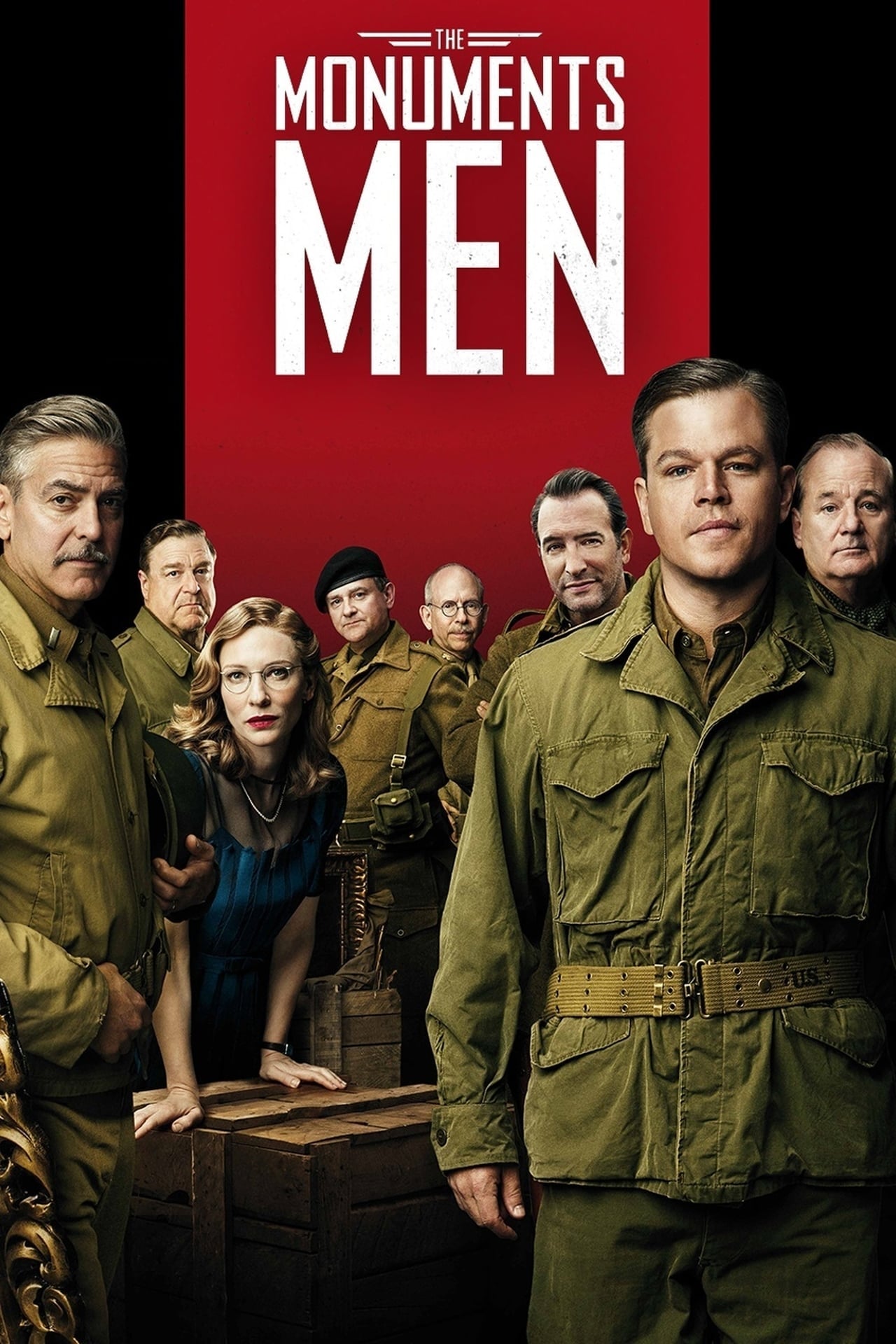
Based on the true story of the greatest treasure hunt in history, The Monuments Men is an action drama focusing on seven over-the-hill, out-of-shape museum directors, artists, architects, curators, and art historians who went to the front lines of WWII to rescue the world’s artistic masterpieces from Nazi thieves and return them to their rightful owners. With the art hidden behind enemy lines, how could these guys hope to succeed?
05 Feb The Monuments Men (2014)
The Diary
I am thankful that Clooney is working. I’ve heard him speak as himself; he is a good man, interested in good things. I forgive him his lack of range as an actor, because the characters he plays are so engaging.
And he made ‘Good Night, and Good Luck’ That film was based on two ideas. First was the notion that a real event is so intrinsically powerful that any reasonably accurate portrayal will allow its fracture of time to be evident. Those were times which stressed the American ideal and good men spoke up. Now are times that stress American values ever so more and the press is silent. So on this score alone he was right in planning this film.
The other idea from ‘Good Night’ is that there is power in words, and to make words cinematic you photograph smoke. This worked alarmingly well. An entire turbine revolves around these two ideas, focused.
Now here we have the first of these again. We were at war. Some nations were doing profoundly evil things. We weren‘t dealing with nuisances, but the loss of our very existence and surely the core of representative democracy. America remained noble, and perhaps the pinnacle of this was the way other nations, cultures were supported. Possibly at no time since Darius have conquerors been so respectful of heritage, even of the defeated. This is powerful stuff, this American history, this notion in our time.
The movie should have worked. All it had to do was to focus on this singular ideal.
But we have at least three movies muddled about in one mix. I assume this because of meddling by financiers. We have a ‘Dirty Dozen’ who somehow represent the hundreds who actually were there. This has the required: famous actors giving recruitment nods at the beginning, then antics. We have the similarly required redemption of souls typical of the genre, but done without the usual wit, grit and score.
We have the story of two artistic objects, elevated among others because religious art can be surrounded with cinematic gravitas where more direct soul-to-soul touching could only be cinematically convoyed by a film that truly is transformative art. This component is also profoundly weak. We never care.
Buried in these rambles is a third movie, a whole movie apparently shot independently. This is so sublime, so powerful that I am recommending the whole thing to you. The story is simple: a Parisian curator is recruited to help Germans steal art on a grand scale. (This was Germans, not Nazis, and was general theft but here we focus only on the art.) She secretly keeps records in the hope that it may be returned, even though many owners were murdered.
Once she is discovered by our heroes, she doesn‘t believe they could be so noble. Surely, she believes, one conquering army will be as appropriative as another. She comes around when the ideal becomes real, and helps. She is central to the successive recovery of much, before the thuggish Russians arrive.
A simple story. All Cate Blanchett had to do was show up and walk through it like the others. But no, she is riveting. I couldn‘t breathe when she was on screen, so taut was the space around her. It almost seems that Clooney engineered three levels. One is the memory we carry of war films. A second is a sketch of a war movie as background to this powerful third level of the woman‘s story.
Cate‘s character is drawn with many unknowns. She is without a partner, steeped in tragedies that we cannot know. She is hungry but reserved, steaming but tacit. All her pains are channeled into deliberate, constraints that we see in every motion — and later in the precision of the diary. (Whoever made this prop deserves an Oscar.)
It seems that both Clooney and Blanchett studied what worked in Schindler‘s List, where it wasn‘t the investment in speech that anchored the story but the creation and honoring of a document. The document (her diary of the thefts) then inherits all the qualities of the irreplaceable art but distilled into something to build a cinematic situation around. This is truly an achievement.
Oddly, the whole enterprise is framed by Clooney‘s character presenting to senior politicians, first to propose the (reluctantly approved) saving of art and then to report the successes. I don’t think anything like this actually happened. The dynamic was that the war effort was not a success because of armies, but because of the inventions of civilian scientists and engineered manufacturing miracles. War is always about the technology of destruction, so is at root about harnessing genius.
After a certain point, keeping these folks engaged meant building some healing into the enterprise. Simple as that and a far better story.
Posted in 2014
Ted’s Evaluation — 3 of 3: Worth watching.


No Comments